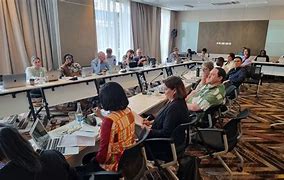Understanding the dynamics of ageism in the workplace is crucial for fostering a harmonious and productive environment.
Research indicates that both younger and older employees thrive when working alongside colleagues from diverse age groups.
While workers under 35 may initially display lower productivity levels, they often show improvement when integrated into teams with more experienced individuals. On the other hand, those above 50, who exhibit similar productivity to their counterparts aged between 35 and 49, also benefit from such intergenerational interactions.
The presence of a variety of age groups in a company not only enhances overall efficiency but also contributes to reduced employee turnover rates. Despite these advantages, many organizations struggle with implementing intergenerational practices due to initial denial or resistance to change among leadership. Some managers tend to overlook the importance of addressing ageism issues, questioning the need for action if no visible complaints are raised within the workforce.
A revealing survey conducted by Ernst & Young and Maturi Agency in 2022 shed light on this issue by uncovering that a significant 78% of companies acknowledged exhibiting ageist tendencies and erecting barriers against hiring older workers. Overcoming these challenges requires a shift in mindset and proactive measures to promote inclusivity across all age demographics within the workforce.
The AARP (American Association of Retired Persons) offers valuable guidance for forward-thinking managers dedicated to embracing age diversity in their organizations. Emphasizing that implementing intergenerational initiatives does not necessitate grand gestures, AARP advocates for starting with pilot programs where participants have a voice, potentially becoming advocates for broader change within the company.
Addressing ingrained stereotypes associated with different age groups is essential for creating an inclusive work environment where all employees feel valued and respected regardless of their generational background. Leveraging a mix of skills from various age brackets can significantly benefit organizational performance and innovation capabilities.
Employers are increasingly recognizing the financial advantages of having multigenerational teams, with studies indicating that 83% believe such diversity positively impacts company profitability. However, combating ageism during recruitment remains a challenge as biases often manifest through job requirements favoring attributes like digital nativism or recent graduation over qualities such as creativity, adaptability, or experience.
To foster effective intergenerational collaboration, companies can adopt strategies recommended by publications like Forbes:
1. Establish formal and informal communication channels.
2. Identify common interests across generations.
3. Encourage skill development and continuous learning opportunities.
4. Implement reverse mentoring to facilitate cross-generational knowledge exchange.
5. Ensure generational diversity within leadership teams.
6. Cultivate a supportive team-oriented culture that values collective success.
By embracing these principles and actively promoting intergenerational cooperation, companies can unlock new levels of innovation, productivity, and employee satisfaction while combatting harmful ageist attitudes prevalent in many workplaces today.









Leave feedback about this